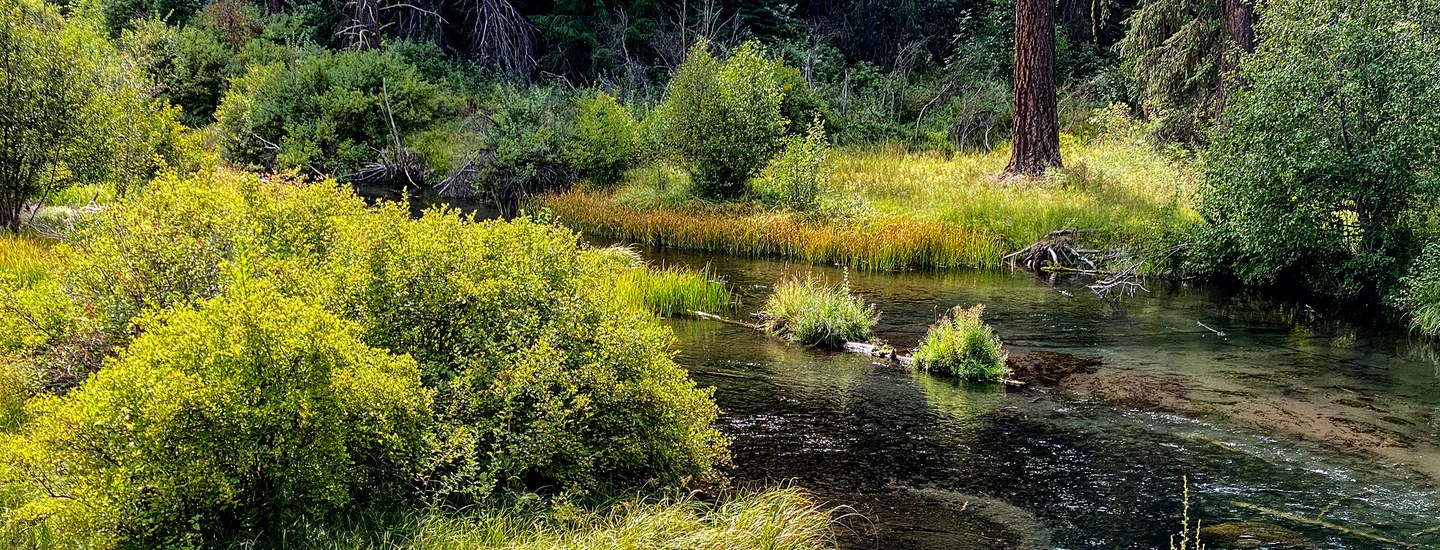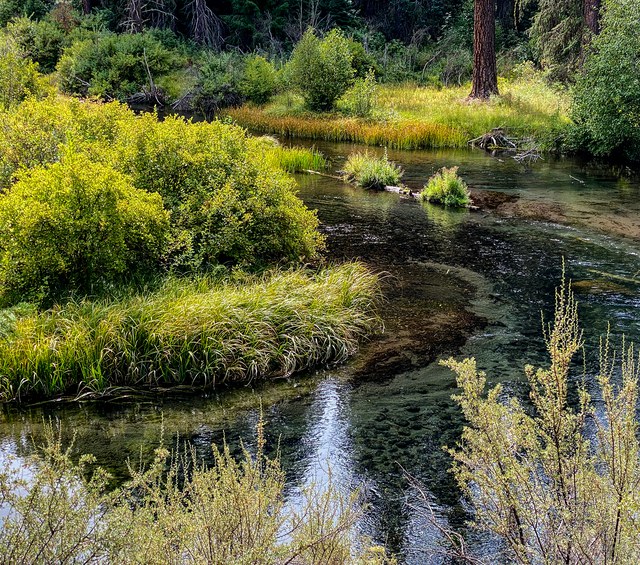Although the summer solstice marks the time when days begin to get shorter, we don’t usually notice the changes in light and temperature until this time of year, approaching the equinox, when day and night are roughly equal. With shorter—though not-quite-yet-short—and cooler—though not-quite-yet-chilly— days, it’s a glorious time to be outside, and a stroll along the Metolius River felt like the perfect way to spend an afternoon!
Backpacks stuffed with water, binoculars, walking sticks—just in case!—and picnic snacks, we set off for an early fall hike.
It’s still warm at this time of year in the afternoon, and the first crisp bite of fall blowing up off the water was like a breath of nature’s air conditioning as we followed a trail that wended, at times closer to the water, and at times further back through the trees. I was struck by the different kinds of plants along this stretch of the river: grand fir, ponderosa pine, douglas fir, and western cedar. And ferns! I’ve long been a fan of these curly and earliest land-dwellers, and I don’t often see them in the east Cascades. I wondered if this area tucked alongside Black Butte and Green Ridge has more rain or moisture in the soil—a question for future inquiry! Greater plant diversity is one of the key elements to building strong natural areas as the effects of climate change become more noticeable to us—things like heat, drought, wildfire, disease, and pests (like the emerald ash borer, which was recently discovered to have made its way into the west Cascades).
We saw mule deer jumping through the brush, only the quiet shush-shush-shush of plants communicating their passage. Mallards floated the dappled water. The river spreads out and slows down on this stretch of its meander, flowing around islands that have formed from plants taking root in woody debris. Later, a common merganser resting on a log in the water caught our attention, the feathers on its head glowing almost magenta in the sunlight.
We made sandwiches from the supplies we had packed, using a fire-laced log for a counter top, and quickly drew the curiosity of plump black ants and vibrant yellow jackets. Once we constructed our sandwiches, we ate on the move to avoid further insect attention!
On the trail was a short dark gray feather tinged with orange—from a flicker, I guessed—that reminded me of the abundant animal life that calls this place home, even while often moving and living out of our sight.
The wonder is there if you can look for it, but even without necessarily feeling the awe or inspiration that can come from time outdoors; simply being outside and having safe and healthy spaces to enjoy is good for us.
Fall is a time of harvest, and traditionally the name for this season was simply “harvest.” It brings up thoughts of preparation, community and sharing of labor, as we all contribute to the work of storing up supplies for the coming winter.
In my own Japanese heritage, there is an understanding of all things being inhabited by their own life force or spirit. It’s by engaging with the entirety of the world around us with respect that we all—plants, animals, mountains, water, and humans alike—can continue to flourish and thrive together. Many traditions and people groups have taught similar values of good stewardship, taking care of the lands and waters we rely on, and taking care of how we consume, not only to extract but to give back too.
The Deschutes Land Trust conserves, protects, and restores more than 18,700 acres of lands and waters across Central Oregon. The “trust” in the name means holding these places in trust in perpetuity for the communities that call this place home. While we’re coming toward the end of our Walks + Hikes season, there are still plenty of guided tours to learn about and enjoy the fall in this beautiful place we live.
Learn more:


